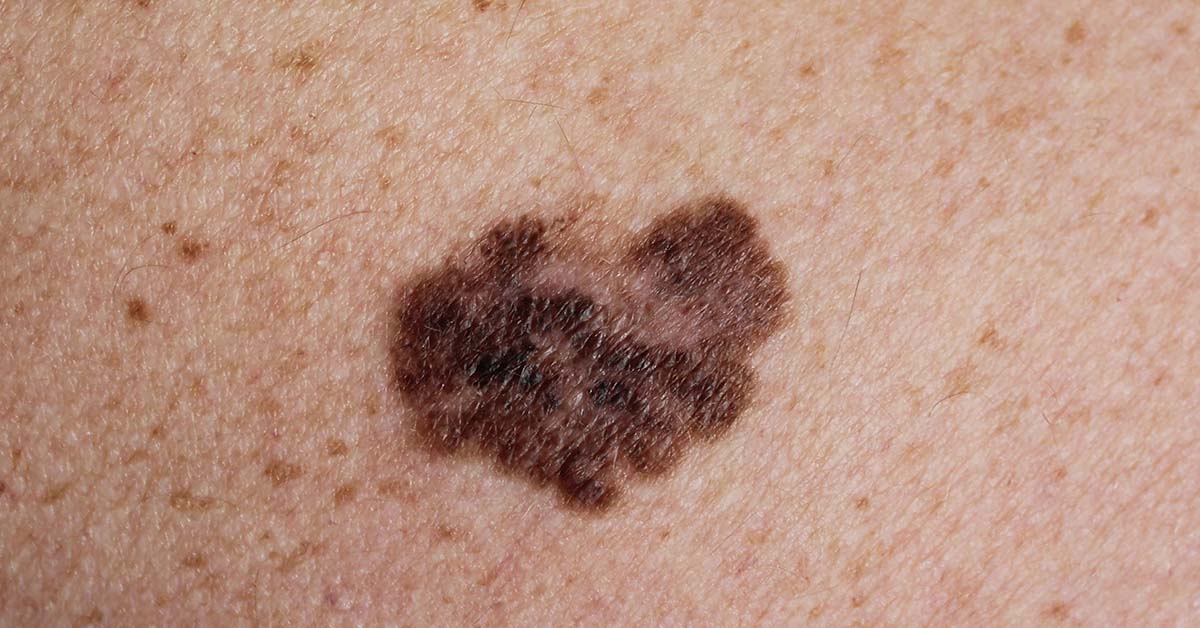Melanoma is one of the world’s deadliest cancers. It is also, however, one of the most preventable. Melanoma is a type of skin cancer that develops from the cells known as melanocytes, the cells responsible for producing the pigment melanin. It is the most dangerous form of skin cancer and can lead to serious complications if left untreated. A recent time-lapse video has captured the transformation of a dark patch of skin into melanoma cancer, highlighting the importance of early detection and treatment. Let’s take an in-depth look at the different stages of melanoma presented in the video and explore the available treatment options for each stage.
Understanding Melanoma
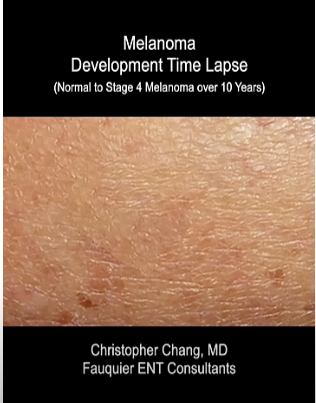
Melanoma usually develops slowly, typically starting as a benign mole or patch of skin. However, certain factors can trigger the transformation of these benign growths into cancerous tumors. These factors include excessive exposure to ultraviolet (UV) radiation from the sun, a weakened immune system, family history of melanoma, and certain genetic mutations. (1)
As melanoma progresses, it goes through various stages, each characterized by specific features and aggressiveness. The earlier the stage at which melanoma is diagnosed, the better the chances of successful treatment and a positive prognosis.
Read More: 11 Cancer-Linked Products That Many Use Daily
Each Stage Presented in the Video
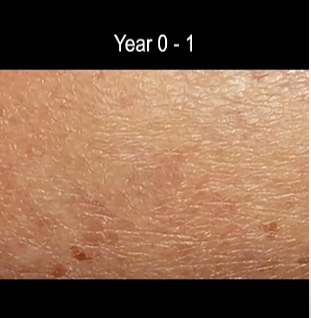
The video created by Fauquier ENT uses AI technology to show how melanoma develops over a 10 year period. Many commenting on the video are calling it “scary” and mentioning how quickly it began developing in the last few years. While this video is frightening, it is a good reminder for us to stay vigilant, use sun protection, and monitor our skin for changes that could be of concern.
Year 1-5: Benign Stage
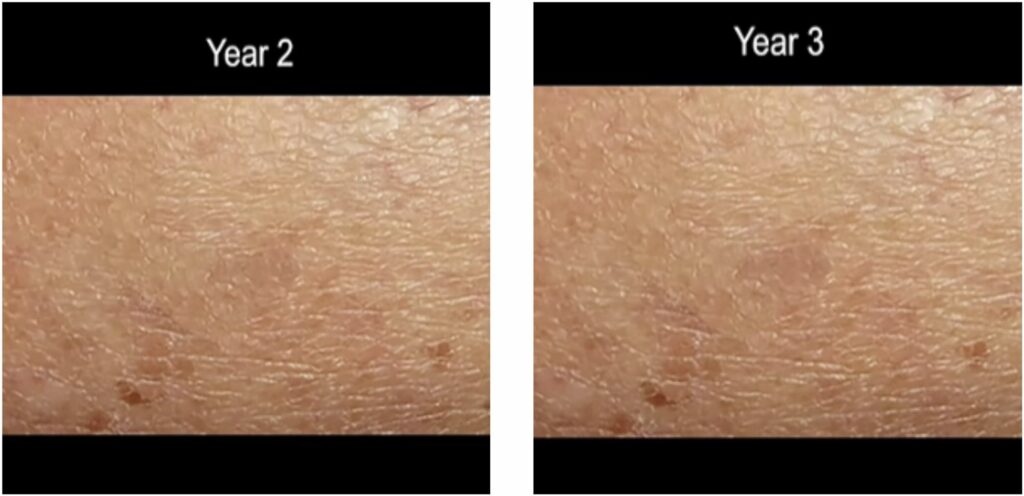
During this stage, melanoma is in its earliest form, known as the radial growth phase (RGP). The cancer cells are confined to the epidermis, the outermost layer of the skin, and have not yet invaded deeper layers or spread to other parts of the body.
Year 1-5: Benign Stage (Continued)
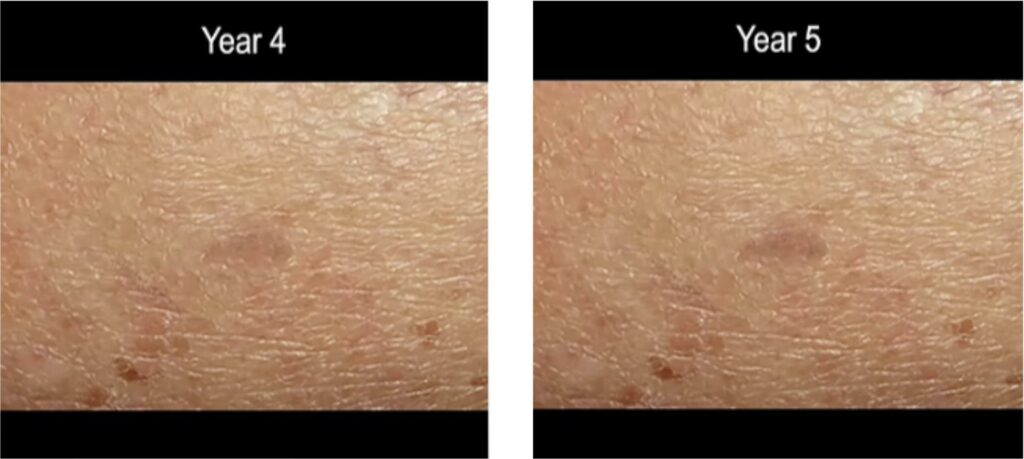
At this stage, the melanoma may appear as a small, irregularly shaped mole or patch of darkened skin. Treatment options for early-stage melanoma may include surgical excision to remove the cancerous cells. (2)
Year 6 & 7: Stage 0 Melanoma
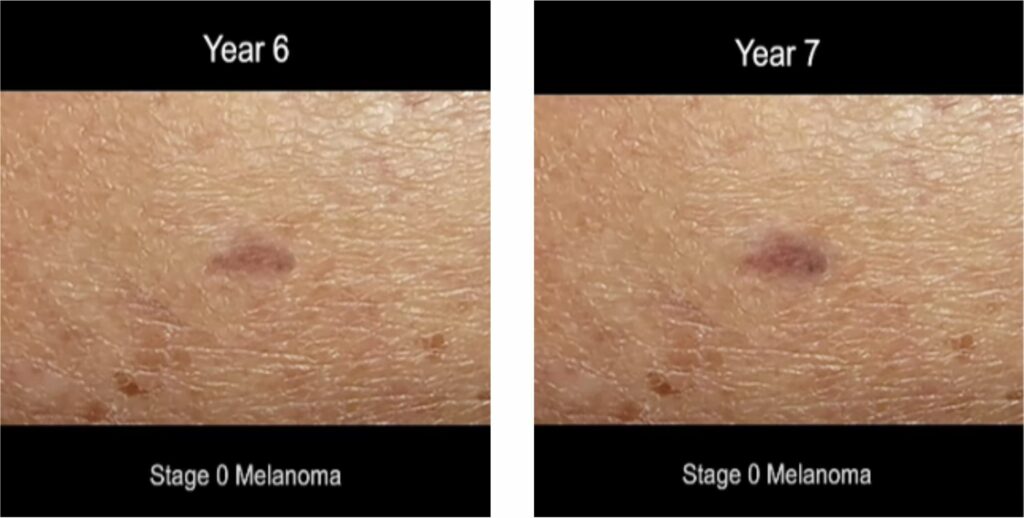
Stage 0 melanoma, also known as melanoma in situ, is characterized by the presence of abnormal cells that are confined to the epidermis. The cancerous cells have not invaded deeper layers of the skin or spread to other areas of the body. Treatment options for stage 0 melanoma usually involve surgical excision to remove the abnormal cells. In some cases, additional treatments such as topical creams or photodynamic therapy may be recommended.
Year 8 & 8.25: Stage 1 Melanoma
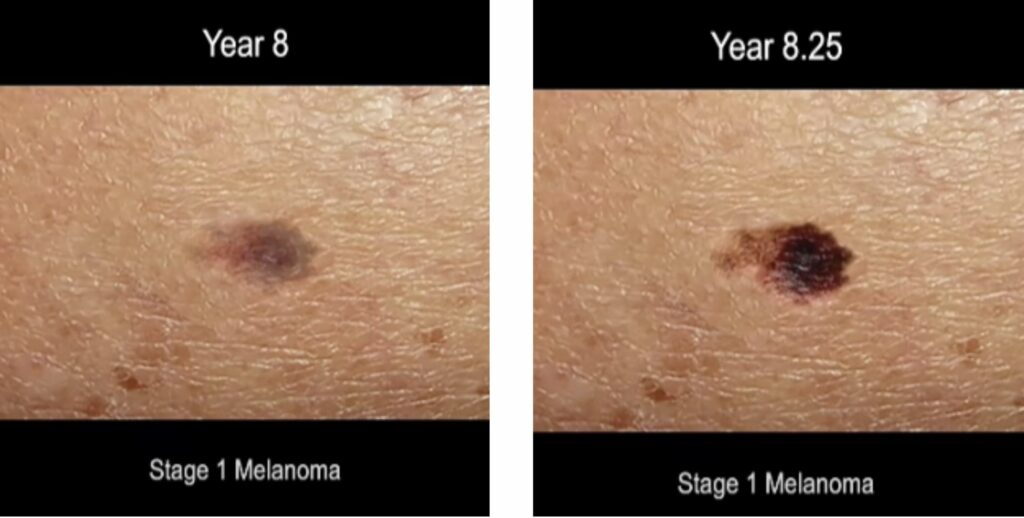
Stage 1 melanoma indicates that the cancer cells have invaded the deeper layers of the skin, such as the dermis. However, at this stage, the melanoma has not metastasized, meaning it has not spread to nearby lymph nodes or distant organs. Treatment options for stage 1 melanoma often involve surgical removal of the tumor and may also include a sentinel lymph node biopsy to assess the spread of cancer cells to nearby lymph nodes.
Read More: Cryotherapy Treatment Saves Nurse with Stage 4 Cancer
Year 8.5: Stage 2 Melanoma
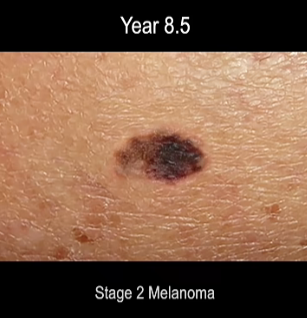
Stage 2 melanoma signifies that the cancerous cells have begun to invade nearby lymph nodes, but not yet distant organs. Treatment options for stage 2 melanoma may involve surgical removal of the tumor and nearby lymph nodes, followed by additional therapies such as immunotherapy, targeted therapy, or radiation therapy to target any remaining cancer cells.
Year 8.75 & 9: Stage 3 Melanoma
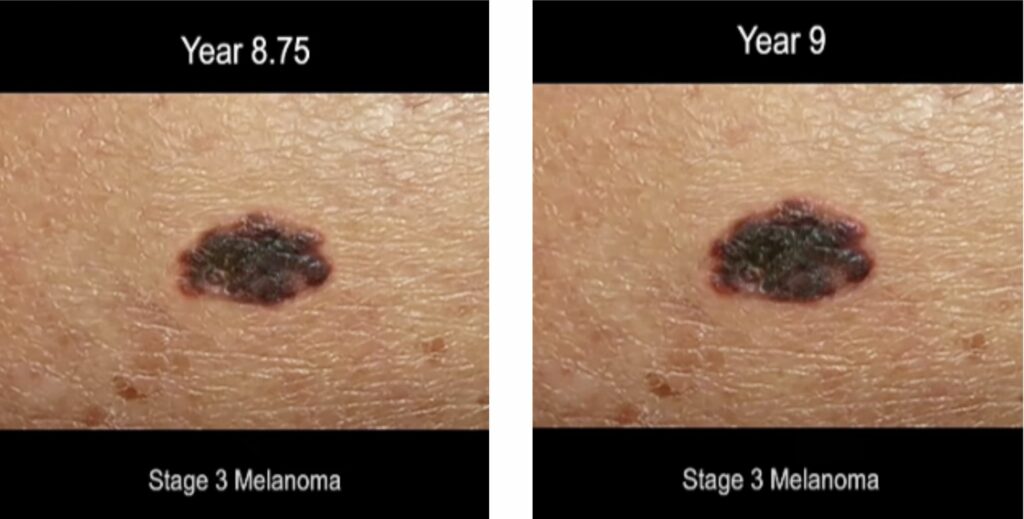
Stage 3 melanoma indicates that the cancer has spread to nearby lymph nodes and may also involve the invasion of adjacent tissues. Treatment options for stage 3 melanoma often involve surgical removal of the tumor, nearby lymph nodes, and any affected tissues, followed by additional therapies such as immunotherapy or targeted therapy. In some cases, radiation therapy may also be recommended.
Year 9.25, 9.5, 9.75, & 10: Stage 4 Melanoma
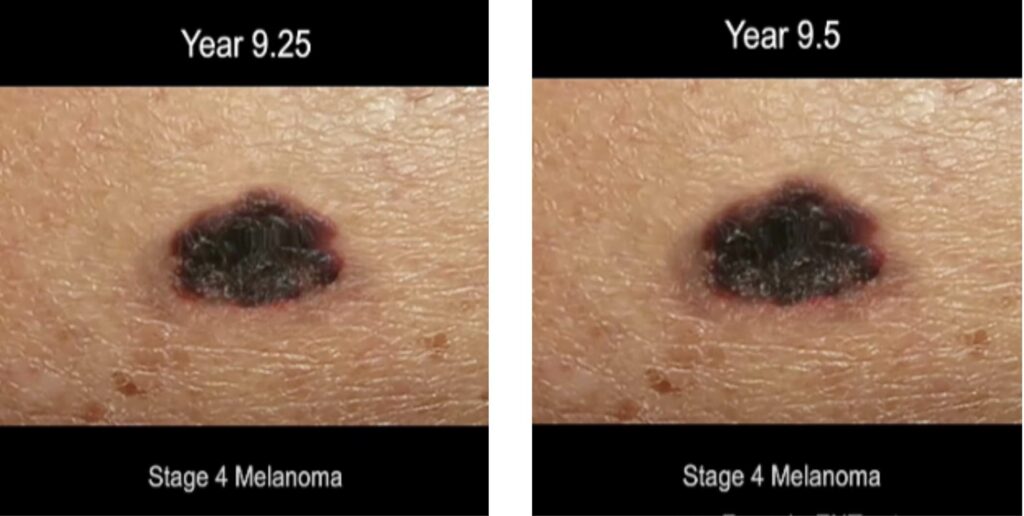
Stage 4 melanoma is the most advanced stage of the disease, indicating that the cancer has metastasized to distant organs or tissues such as the liver, lungs, or brain.
Year 9.25, 9.5, 9.75, & 10: Stage 4 Melanoma (Continued)
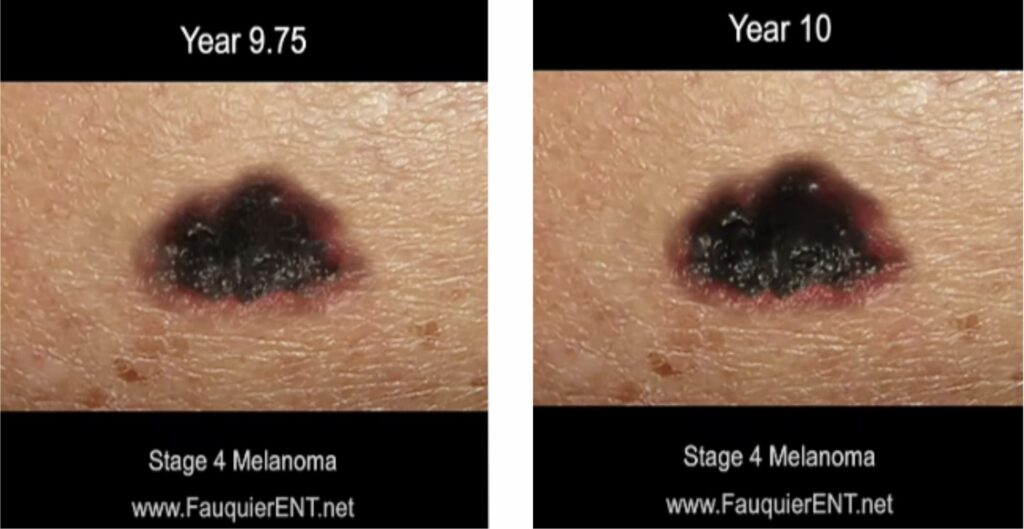
Treatment options for stage 4 melanoma focus on managing the disease and improving quality of life rather than achieving a cure. Treatment may involve a combination of surgery, radiation therapy, immunotherapy, targeted therapy, chemotherapy, and palliative care.
Melanoma and Skin Cancer Prevention

Prevention is crucial when it comes to melanoma and other forms of skin cancer. Protecting the skin from excessive UV exposure by wearing sunscreen, protective clothing, and avoiding tanning beds can significantly reduce the risk of developing melanoma. Regular self-examinations of the skin and early detection of any suspicious moles or changes in skin appearance can also lead to timely intervention and better treatment outcomes. (3)
The Bottom Line

The video time-lapse showcasing the transformation of a dark patch of skin into melanoma cancer serves as a reminder of the importance of early detection, diagnosis, and treatment. By understanding the stages of melanoma and the available treatment options, individuals can take proactive steps toward prevention and seek prompt medical attention for any concerning changes in their skin.
If you would like to watch the video in its entirety, you can visit the Fauquier ENT YouTube page
Read More: Researchers Treat HER2-Positive Breast Cancer Without Chemo
Sources
- “What Is Melanoma Skin Cancer?” American Cancer Society
- “Melanoma Skin Cancer Stages.” American Cancer Society
- “Prevention.” Cure Melanoma
